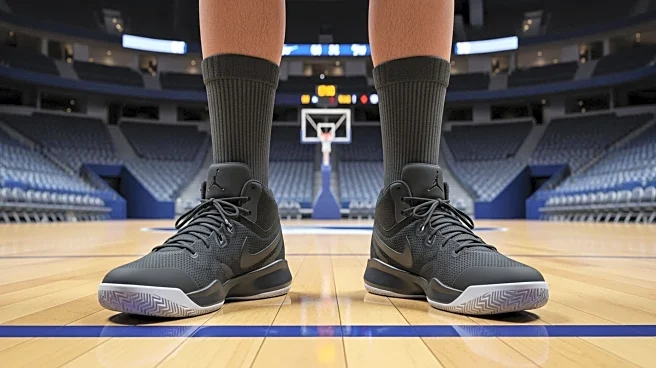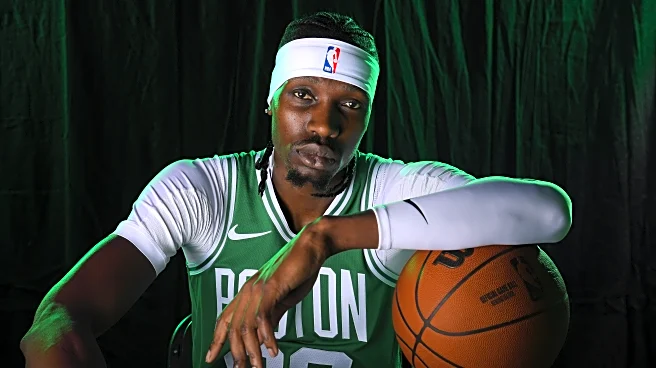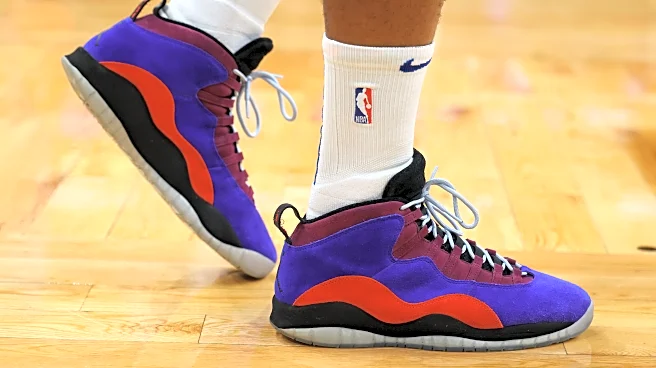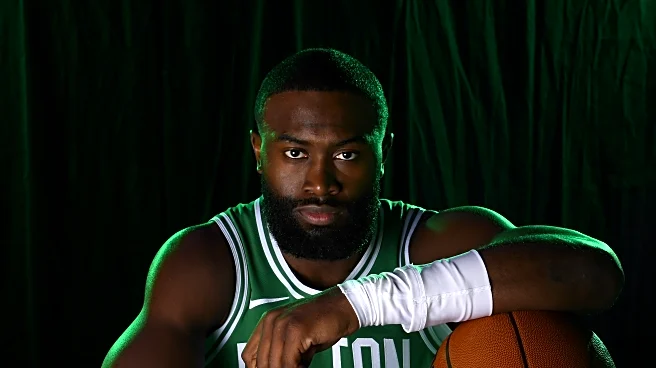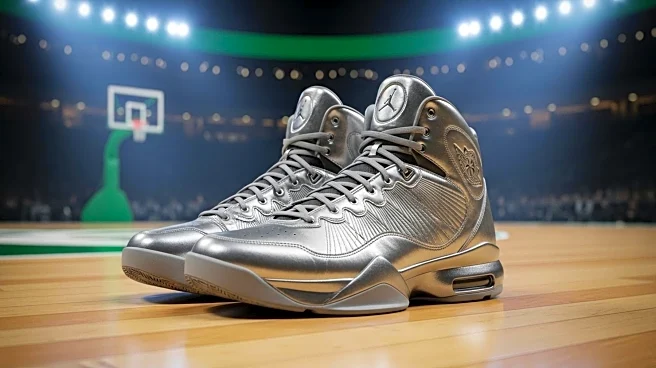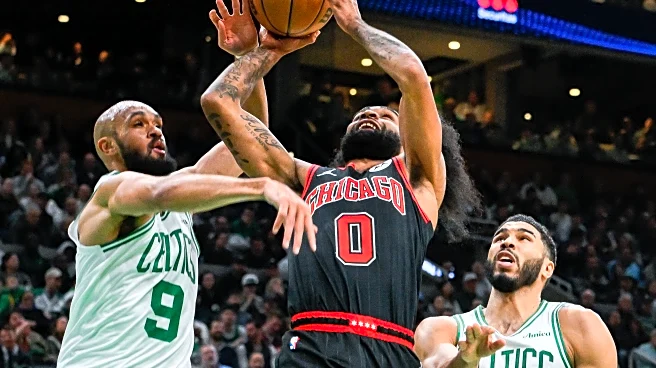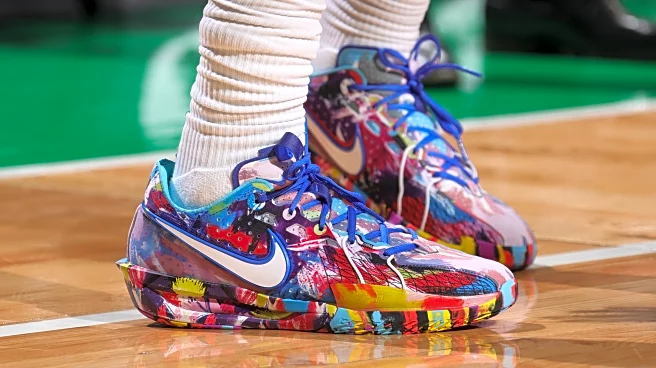What is the story about?
What's Happening?
The Boston Celtics are entering the 2025-26 NBA season without their star player, Jayson Tatum, who is sidelined due to a ruptured Achilles tendon. This injury occurred during the fourth quarter of Game 4 against the New York Knicks in May, significantly impacting the team's structure and performance expectations. The Celtics, who finished the previous season with a 61-21 record, have undergone significant roster changes, including the departure of key players like Al Horford and Kristaps Porziņģis. The team has added new players such as Anfernee Simons and Chris Boucher, but the absence of Tatum, a central figure in their offensive and defensive strategies, poses a challenge. The Celtics are now focusing on how to navigate this 'gap year' and maintain competitiveness in the Eastern Conference.
Why It's Important?
Jayson Tatum's absence is a critical blow to the Celtics, who have been perennial contenders in the NBA. His injury not only affects the team's immediate performance but also their long-term strategy. The Celtics are one of the most expensive teams in NBA history, and Tatum's injury forces them to reconsider their financial and competitive strategies. The team must now rely heavily on players like Jaylen Brown and Derrick White to step up and fill the void left by Tatum. This situation could lead to a significant shift in the Eastern Conference dynamics, as the Celtics may struggle to maintain their status as top contenders. The team's financial decisions, including potential trades and salary cap management, will be crucial in determining their future success.
What's Next?
The Celtics are likely to explore various strategies to remain competitive without Tatum. This includes potentially increasing their pace of play and relying more on three-point shooting. The team may also consider making trades to manage their salary cap and avoid luxury tax penalties. As the season progresses, the Celtics' management will need to assess whether to focus on immediate competitiveness or to strategically position themselves for a stronger comeback in the 2026-27 season when Tatum is expected to return. The decisions made during this season will have long-term implications for the team's roster and financial health.
Beyond the Headlines
The Celtics' situation highlights broader issues in professional sports, such as the impact of player injuries on team dynamics and financial planning. It also underscores the importance of having a deep and versatile roster that can adapt to unexpected challenges. The team's response to Tatum's injury could serve as a case study for other franchises facing similar situations. Additionally, the Celtics' financial maneuvers to stay under the salary cap could influence how other teams approach roster management and player contracts in the future.
AI Generated Content
Do you find this article useful?


